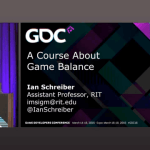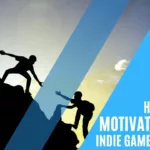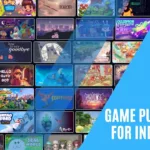Making a game is a very hard work. It takes time, effort, and dedication to create something that people will enjoy playing. However, sometimes the best thing to do is to know when it’s time to quit. Knowing when to quit making a game can be difficult, but there are some signs that can help you decide.
💡 Key Takeaway: Quitting a game project doesn’t mean you’ve failed. Sometimes it’s the best decision to conserve time and resources for more promising ideas. Look for signs like lack of progress, budget constraints, negative feedback, and burnout. Quitting at the right time allows you to start fresh with renewed creativity.
Contents: Knowing when to quit Making a Game

You’ve Reached Your Goal
If you have a clear idea of what you want to achieve with your game, then you can use that as a guide for when it’s time to move on. Once you’ve achieved the goal you set out to accomplish, it’s time to move on to something else. You don’t want to keep working on something that’s already been done.
Having a solid vision and measurable goals are crucial when undertaking any big project. They help provide focus and a finish line to work towards. If your initial goal was to create a simple 2D platformer to practice your coding skills and you’ve completed it, continuing to add features could result in scope creep. Reevaluating and setting new goals at this stage is better than endlessly expanding a project with no end point in sight. Meeting your goals means celebrating your accomplishment before shifting energy elsewhere.

The Creative Process Has Stagnated
The creative process is a key part of game development and it’s important to keep it going. If you find yourself stuck in a creative rut, it might be time to move on to something else. This doesn’t necessarily mean that you have to give up on your game entirely, but it could be a sign that it’s time to take a break and come back to it with a fresh perspective.
Game development requires constant creativity and problem solving. You need to come up with engaging mechanics, clever level designs, and interesting artwork. If you feel like you’re just going through the motions without any new ideas, that’s a red flag. Pushing forward while burned out leads to subpar work.
Sometimes a break is all that’s needed to reboot your imagination. Other times, it’s better to channel that creativity into a new project. You can always revisit the original game later. Changing gears gives your brain a chance to make new connections and inspiration can strike again.

You’re Spending Too Much Time on a Single Feature
If you find yourself spending too much time on a single feature, it’s probably time to move on. Sure, it’s important to get the details right, but if you’re spending too much time on a single feature then it’s likely that you’re not making any progress. It’s better to move on and work on something else than it is to stay stuck on one thing.
Feature creep can suck up time and resources without contributing to the overall game. As tempting as it is to endlessly polish one aspect, the rest of the project still needs attention. If you’re fixated on perfecting a complex skill tree for example, other key features like enemy AI and controls may suffer.
Leaving some rough edges while you work on other areas is okay. You can always circle back for more tweaking later. Jumping between different parts of the game also gives you fresh perspective. If you just can’t move past one feature, it may need to be scaled back or scrapped altogether if it’s not central to the core experience. Setting limits and deadlines can help prevent getting trapped polishing forever.

You’ve Reached the End of Your Budget
Making a game can be expensive and you don’t want to run out of money before you’ve finished. If you find yourself reaching the end of your budget and you still have a lot of work to do, then it might be time to call it quits. You don’t want to put yourself in debt just to finish a game.
Games require a wide variety of skills and resources. Depending on the scope of your project, you may need to hire additional programmers, artists, musicians, writers, QA testers, etc. Those costs add up quickly, especially if development drags on. Servers, software, advertising, and other expenses matter too.
Crunching the numbers regularly is essential. Don’t assume you can just figure it out as you go. If funds are tight and big milestones are still unfinished, be realistic about what is achievable within your limits. Paying for a unfinished game out of your own pocket is rarely wise. Either scale back the project or free up more funding before proceeding.

The Feedback Is Negative
Feedback is an important part of game development. If the feedback you’re getting is overwhelmingly negative, then it could be a sign that you should move on. If people just don’t seem to be enjoying your game, then it’s probably best to move on and focus your energy elsewhere.
Playtesting is vital for identifying problems and weak points. Listen carefully to feedback from testers, developers, and publishers. If core aspects like the controls, mechanics and progression are routinely criticized, it may be time to go back to the drawing board.
Don’t get defensive when receiving negative feedback. Every critique is an opportunity to improve. But if you’ve already reworked something multiple times without success, it may simply not be salvageable. At that point, continuing to force the issue usually just leads to wasting time and creating resentment. Knowing when to walk away is key.

You’ve Lost Interest
Making a game is hard work and it’s important to stay motivated. If you’ve lost interest in the project, then it might be time to quit. It’s better to move on to something else than it is to force yourself to work on something that you’re not passionate about.
Game development takes tremendous effort and perseverance. You’ll inevitably face roadblocks and setbacks. Having strong intrinsic motivation and interest in what you’re making is essential fuel to push through the challenges.
But over time, even passion projects can lose their luster. Other game ideas may capture your imagination more. If you find yourself dreading working on your current game, that’s your heart telling you it’s time to move on. Forcing yourself to trudge on a project you’ve fallen out of love with leads to burnout. It’s better to channel that energy into new ideas that get you genuinely excited.

You’re Experiencing Burnout
Making a game can be stressful and it’s important to take time off every now and then. If you’re feeling burned out and you’re not making any progress, then it might be time to quit. You don’t want to push yourself too hard and end up doing more harm than good.
Burnout is a real risk in game development. Crunch periods, technical challenges and other stresses take a toll over time. The hours required mean it’s easy to overwork yourself and neglect self-care.
Pay attention to the signs:
- Lack of motivation
- Fatigue and insomnia
- Short temper and irritability
- Lack of joy or satisfaction
- Feeling like you’re hitting a wall
Pushing through burnout only makes it worse. Rest and recovery need to be part of the process too. Sometimes a vacation is enough. But if burnout persists, taking a break from the project or quitting entirely may be the only way to get your passion back. Putting your health first allows you to be in top form when inspiration strikes again.
Pros of Quitting a Game Project
- Frees up time and resources for new ideas
- Avoids wasting more effort on a doomed project
- Allows creative recharging
- Reduces stress and prevents burnout
- Forces critical evaluation about what went wrong
- Makes space for projects you are passionate about
- Opens opportunities for new collaborations
- Saves money by not throwing it at a losing cause
Cons of Quitting a Game Project
- Wasted effort already invested
- Idea may be realized successfully by someone else
- Team morale may suffer
- Investors and publishers confidence may be lost
- Fan anticipation already built up
- Progress may be lost if not stored properly
- Admitting failure can damage self-esteem
- Starting over means further delays

Case Study 1: Perfecting Gameplay Above All
Markus Persson, aka Notch, created Minecraft over nearly 2 years starting in 2009. The barebones alpha version captured gamers’ imaginations with its emergent open world gameplay. Updates steadily expanded features like new blocks, mobs, biomes, redstone circuitry, enchanting, potions and more.
Despite the game’s popularity, Notch remained laser focused on the core gameplay experience. He avoided feature creep and unnecessary complexity. By 2011, the full version 1.0 was released. Notch soon handed over development to Mojang Studios so he could move on to new projects.
Minecraft succeeded because it stuck to a clear vision and known limits. Notch didn’t let it become an endless slog, instead quitting at the peak of the game’s glory. This allowed Minecraft’s new owners to build upon a solid foundation for even greater success.

Case Study 2: Ambition Outpacing Resources
After 8 years in development, indie studio Infinite Fall finally canceled their highly-anticipated RPG Night in the Woods in 2016. Planned as a narrative heavy coming-of-age story, the scope grew too large over time. The visuals and gameplay became inconsistent as different members pushed it in opposing directions.
Despite thousands of crowdfunding backers eager for the game, the company realized continuing was futile. Instead, they made the tough choice to quit and start fresh. They stripped the game back down to focus on the coming-of-age story and side activities. This focused approach led to releasing the acclaimed Night in the Woods in 2017.
Knowing when to quit the overly-complex original project gave Infinite Fall time to rework it into something achievable. The pivot paid off with a more coherent and rewarding game in the end.
Key Considerations When Quitting a Project
- Save work and assets properly for potential reuse
- Be transparent with team and community about decision
- Take time to process lessons learned for personal growth
- Don’t dwell on sunk costs that can’t be recovered
- Celebrate successes achieved so far
- Take a true break before starting something new
- Make quitting a milestone, not a failure
- Learn to recognize warning signs earlier next time
Conclusion: Knowing when to quit Making a Game
Quitting a game project is a difficult decision, but sometimes necessary. The key is paying attention for signs like lack of progress, budget issues, negative feedback, or waning interest. Quitting at the right moment conserves resources for projects with more potential. Having the courage to walk away and start fresh can lead to better results in the end. Don’t force a bad fit out of a sense of obligation. Stay focused on your goals, capabilities and passion. When those fade on a project, it’s likely time to move on. With the right mindset, quitting can be an achievement in itself, freeing you up for the next success.
What game projects have you quit? What signs told you it was time? Share your stories and advice in the comments! And be sure to follow the blog for more game development articles.

Frequently Asked Questions ( FAQ) Knowing when to quit Making a Game
Q: How do I know when it’s really time to quit a game project?
A: Signs include constantly missing milestones, lack of progress, budget or resource constraints, core features still not working, negative playtester feedback, loss of passion for the project, and team burnout. If issues persist despite multiple attempts to correct them, it may be time to move on.
Q: Should I quit if I’ve already put a lot of time and money into a project?
A: Don’t let sunk costs keep you committed to a failing project. Judge the likelihood of success from this point forward – ignore what’s already been spent. Quitting early can save more time and money in the long run.
Q: What should I do if my team wants to keep going but I want to quit?
A: Voice your concerns honestly but tactfully. Explain factors making you want to quit the project and ask if they share any of the same doubts. Compromise on a trial period to fix issues before fully committing to continue.
Q: How can I convince my publisher, investors or crowdfunders not to abandon me if I quit?
A: Transparency is key. Explain the thought process behind quitting and that you don’t take it lightly. Provide evidence of the issues you’ve encountered. Develop a plan to issue refunds if applicable or shift the investment to your next project.
Q: Is there a way to quit without feeling like I’ve failed?
A: View it as a learning experience that will make you stronger. Celebrate successes achieved so far and document lessons learned. Understand that quitting can be the wiser path. Failure is only truly failing to try again.
Q: Should I open source the project or release unfinished parts after quitting?
A: This is an individual decision. Be cautious about releasing anything that may damage your reputation. But making source code or assets available can enable others to build on your work.
Q: What should I work on next after quitting a big project?
A: Take time to recharge first before rushing into something new. When ready, consider starting with some short experimental projects to reboot your creativity without major commitment.
Q: How can I avoid needing to quit projects in the future?
A: Set realistic scope, make iterative prototypes, get early feedback, break work into milestones, monitor budget closely, take breaks to avoid burnout, and be ready to course correct quickly if things go off track.
Q: Does quitting a project mean I don’t have what it takes to be a game developer?
A: Not at all. Quitting can demonstrate wisdom and self-awareness. The best game developers understand when to change course and adapt projects or stop them entirely to achieve success. Knowing when to quit is an important skill.







